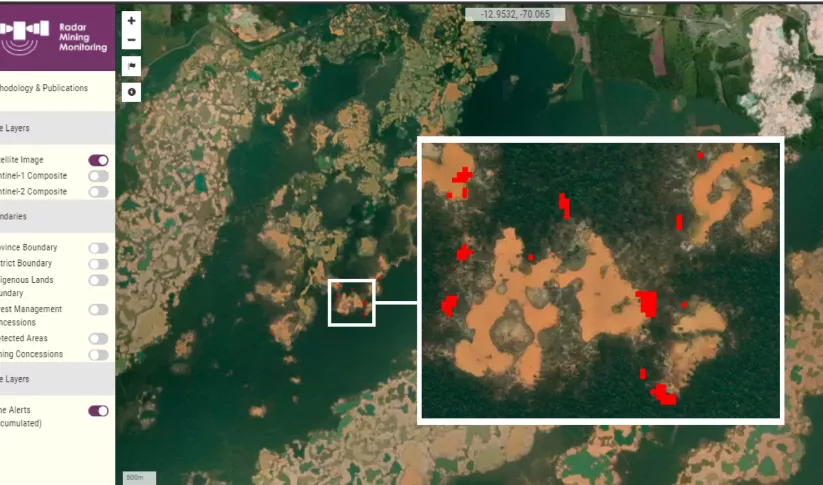SERVIR Launches New Gender Analysis Tool
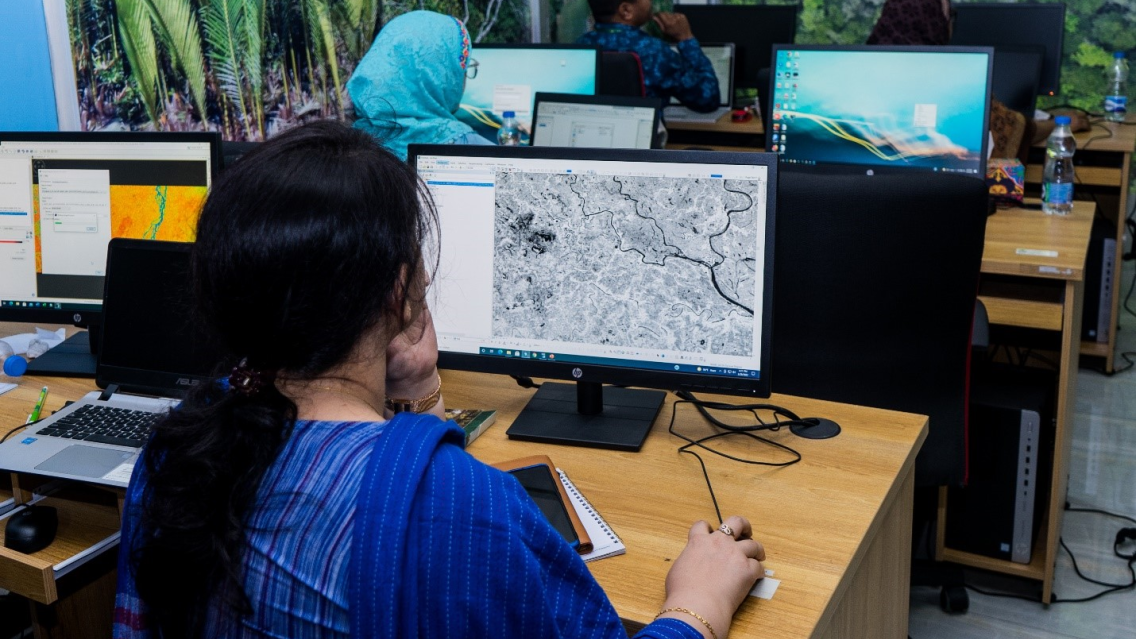
The SERVIR Gender Analysis Tool supports the SERVIR network in the successful inclusion of women as co-developers in the design of services. This approach means that women are included as leaders in the design process, not just as beneficiaries of the final product. The tool aims to be responsive to the differentiated needs of women and men as both developers, users, and beneficiaries of geospatial services.
At the recent online launch event, Peter Epanchin, USAID Senior Climate Adaptation and Resilience Advisor, noted, “This gender analysis tool provides guidance that is specific and tailored to SERVIR and service development. This resource targets service-level gender analysis which will help us meet our goal of supporting both women and men to realize equal benefits from the services that we work on together.”
A gender analysis is a framework that explores an activity in the context of gendered power dynamics, opportunities, and constraints, all of which impact and provide a foundation for any activity or initiative. Gender integration is an important part of the SERVIR Service Planning approach. A gender analysis can help further inform recommendations for service design with an eye toward gender equity and social inclusion.
This new tool is the product of several years of the SERVIR network’s engagement with Advancing Gender in the Environment (AGENT), a collaboration between the International Union for Conservation of Nature (IUCN) and USAID. It is a valuable asset for the network to strengthen SERVIR services and activities using a gender lens.
At the launch event, SERVIR hubs shared some ways they are already using gender analysis to support their work. Marina Irigoyen shared how SERVIR Amazonia applied gender analysis to the Radar Mining Monitoring Tool (RAMI). The tool detects gold mining activities, which are often associated with deforestation and pose significant threats to women. Jacquelyne Nnassuna, Gender and Environment Specialist at SERVIR Eastern and Southern Africa, presented the objectives and findings of the Gender-Sensitive Agricultural Index-based Insurance (GAIINS), and noted how gender roles in agricultural practices often leave women more vulnerable to climate shocks.
Diana West, Gender Equity & Social Inclusion Lead at the SERVIR Science Coordination Office, reflected on how SERVIR’s thought leadership on gender has potential to influence NASA’s broader portfolio. At the launch, Ms. West commented, “NASA is deeply committed to DEI - Diversity, Equity, and Inclusion - and we have an Environmental Justice Program. There is a lot of information that we have learned [with this Gender Analysis Tool] that we can share with the Earth Science Division at NASA.”
Learn more about SERVIR’s work to promote gender equality and women’s economic empowerment:
-
SERVIR Gender Analysis Tool
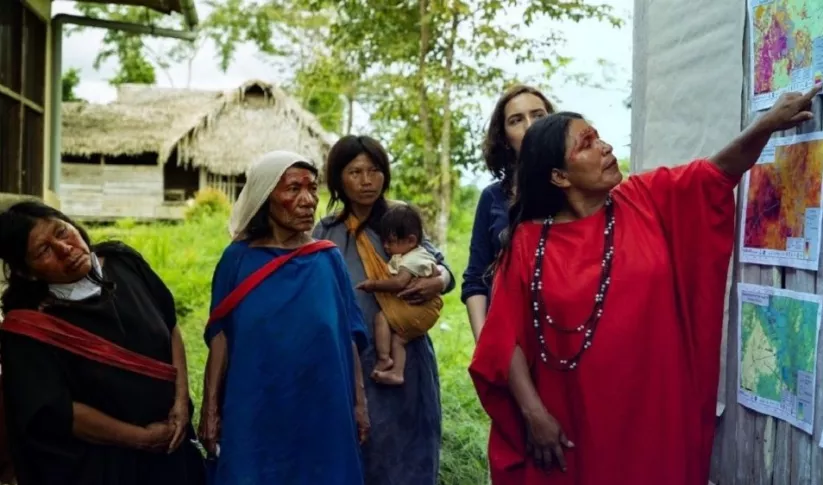
This Gender Analysis Tool provides clear guidance on a foundational step for service design and programming, to contribute to SERVIR’s goals of ensuring that women, along with men, are realizing equal benefits from SERVIR’s geospatial services.
-
Gender Responsive Climate Action
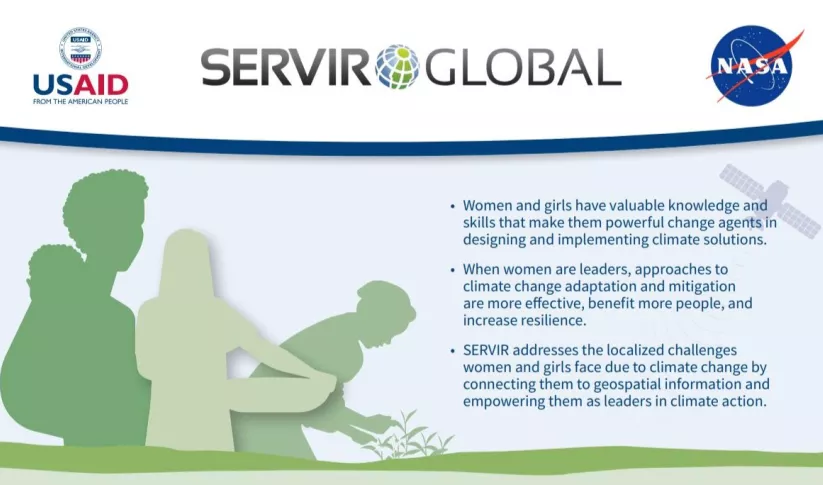
SERVIR builds gender-responsive geospatial services by empowering women and girls as thought leaders in the geospatial and earth sciences so that they can take on leading roles as decision-ma
-
Commitment to Gender Inclusion
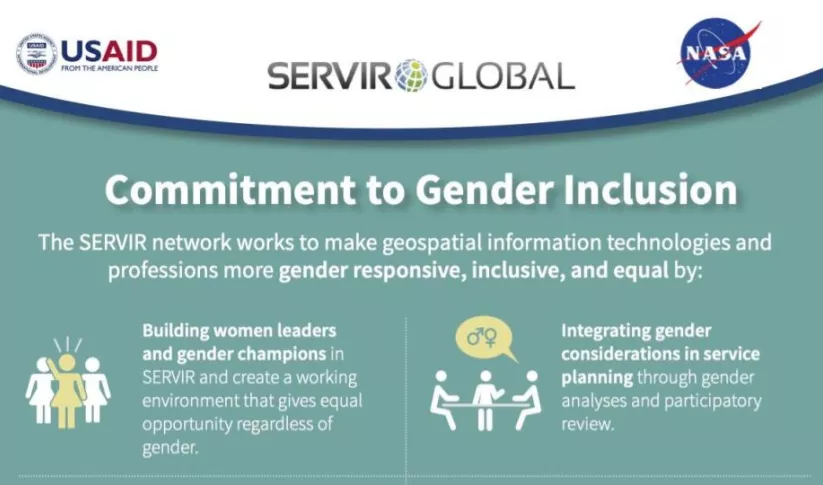
Learn more about how the SERVIR network works to make geospatial information technologies and professions more gender responsive and inclusive.


